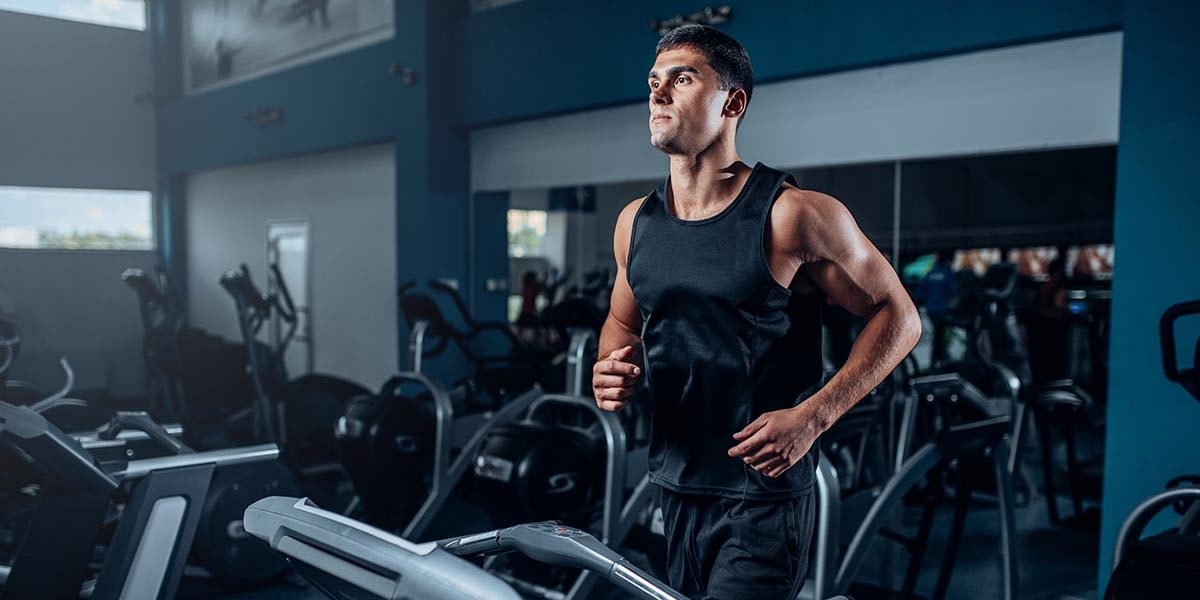Doing a regular cardiovascular exercise is a great way to maintain a healthy body, burn more fat, and speed up the recovery process. However, cardio can also lead to the loss of muscle and reduced strength gain.
It’s clear that if your goal is achieving a strong, visually appealing physique, impaired muscle growth isn’t what you want. So the main question is, how to do cardio to reap all of its benefits and keep muscle mass at the same time?
Keep reading to find out!
If done properly, cardio is an effective tool for staying lean. However, doing more cardio doesn’t necessarily lead to fat loss. In order to lose fat from doing cardio only, you have to be in a calorie deficit.
But if you’re trying to gain or maintain muscle, this is counterproductive.
Therefore, resistance training should always be your number one priority. That is because lifting weights doesn’t only support muscle growth, but it also speeds up your metabolism and contributes to calorie burn.
It’s simply a much more natural way to get lean and healthy than if you would just run on a treadmill every week.
Ideally, you should work out a minimum three times a week and focus on hitting each one of your body parts at least once. Are you training 3 to 5 times a week and have a consistent diet with lots of protein? It may be time to add some cardio.
Here are the main things to keep in mind.
Many people believe that the best time to do cardio is right at the start of their training session when they are fresh and full of energy. However, if your goal is to get stronger and build muscle, this isn’t the right approach.
If cardio comes before weights, it is highly likely it will reduce your energy available for resistance training. This will have a negative impact on your workout as you’ll not be able to lift as heavy as usual.
You’ll also do fewer reps and sets, as this study shows.
Furthermore, tiring yourself during cardio can lead to reduced coordination, resulting in a potential injury when performing hard compound exercises, such as deadlifts or squats.
Therefore, to improve strength performance and preserve muscle, we recommend doing cardio only after you finished your weight training session. Alternatively, you can also do your cardio workouts on separate days.
This is the best choice if your schedule allows it.
You have to make sure that you’re eating enough food to maintain muscle mass. If you engage in cardio training, your energy expenditure is naturally higher than it would be if you only trained with weights.
Therefore, consuming enough calories while providing your body with the right macronutrients is crucial.
Protein is especially important as it helps to repair damaged muscle tissues and significantly contributes to building and maintaining muscle mass.
For a post-workout meal, you should aim for 20 to 40 grams of protein intake depending on your weight and body type. As for how much protein you should eat in a day, the recommended amount is somewhere between 1.6 and 2.2 grams of protein per kilogram of body weight.
Sidenote: Want to know more about what to include in your post-workout meal? Check out our guide to eating after training.
The key takeaway: when you decide to add cardio to your workout routine, always make sure you are eating enough high-quality foods to avoid calorie deficit and prevent loss of muscle.
Cardio isn’t just running. In fact, there are three distinct types of cardio you should know about – regular cardio, high-intensity cardio, and high-intensity interval training. Let’s briefly describe each.
Regular cardio is low-intensity, long-duration activity typically lasting from 30 minutes to an hour. It includes exercises such as incline walking, elliptical trainer, cycling, or swimming.
Generally, you should be able to hold a conversation when you are doing regular cardio.
Given the low impact of regular cardio, this type of activity is the best option for everyone who is primarily focused on building and preserving their muscle as it doesn’t put the body under additional physical stress.
This helps you to recover faster and maximise your muscle gains.
High-intensity cardio typically lasts 30 minutes or less and is more physically demanding than the regular cardio. It can be useful for rapid calorie burn at the cost of longer recovery.
We wouldn’t recommend this unless you are a professional athlete specifically focused on improving endurance.
HIIT is an increasingly more popular type of cardio where you alternate between short, intense bursts of 100% output followed by active rest periods.
The length of these intervals, as well as the type of exercise you’re performing, depends on your fitness level.
HIIT and its benefits is a topic on its own. If you decide to give it a try, it’s especially important that you have a solid recovery plan with dedicated rest days. This will ensure you keep getting stronger and stay injury-free.
Looking for more advanced information on fitness and strength training?
At Delta Fitness, we get our clients into great shape in record time by creating personalised plans with clear goals. Because in the end, the results are what matters the most.
Sounds like something you want to try? Book your first free consultation today!

